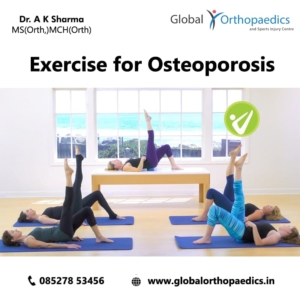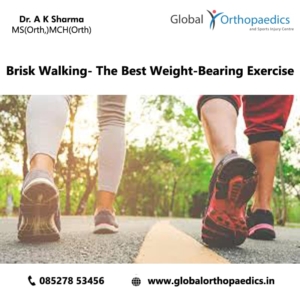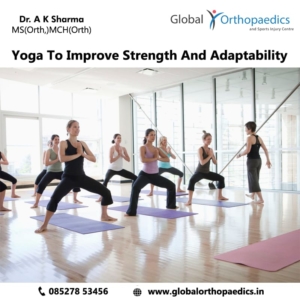Overview
It’s never too late to start out a bone-healthy exercise program, even if you have already got osteoporosis.
A regular, properly and dedicated exercise program may help you to prevent falls and fractures. That’s because exercise strengthens bones and muscles and improves balance, coordination, and adaptability. That’s key for people with osteoporosis.

Check with Your Orthopaedician
Before you begin a replacement workout routine, ask your orthopaedician and physiotherapist. They will tell you what is safe for your stage of osteoporosis, your fitness level, and your weight.
There is no single exercise plan that’s best for everybody with osteoporosis.
The routine you select should be unique and dedicated to your body structure.
- Fracture risk
- Muscle strength
- Range of motion
- Level of physical activity
- Fitness
- Gait
- Balance
Your orthopaedician will consider the other health problems that have an impact on your ability to exercise, like obesity, high vital sign, and a heart condition. Your orthopaedician may assign you to an especially well-trained physiotherapist who can teach you exercises that specialize in body mechanics and posture, balance, resistance weights, and other techniques.
Weight-Bearing Exercises for Osteoporosis
Don’t let the name fool you — these sorts of workouts aren’t about pumping iron. They’re exercises you are doing on your feet in order that your bones and muscles need to work against gravity to stay you upright. Your bones react to the load on them by building themselves up and getting stronger.
There are two sorts of weight-bearing exercise: high-impact and low-impact.
High-impact includes workouts like:
- Brisk walking

- Climbing stairs
- Dancing
- Hiking
- Jogging
- Jumping rope
- Step aerobics

- Tennis or other racquet sports
- Yard work, like pushing or heavy gardening
But be careful. High-impact weight-bearing exercises might not be safe for you if you’ve got a better chance of breaking a bone. Ask your orthopaedician about your workout routine. He may recommend that you simply specialize in low-impact exercises that are less likely to cause fractures and still build up your bone density. These include:
- Elliptical training machines
- Low-impact aerobics

- Stair-step machines
- Walking (either outside or inside on a treadmill machine)
If you’re new to exercises or haven’t figured out for a short time, you ought to aim for gradually increase the quantity you are doing until you get to a half-hour of weight-bearing exercise per day on most days of the week.
Strengthen Your Muscles
Working your muscles matters even as very much like building up bones. It can slow the bone loss that happens with osteoporosis and should help prevent fall-related fractures.
These workouts and exercises might be including basic or generic moves like standing and rising on your toes, lifting your own weight with exercises like push-ups or squats by using equipment such as:
- Elastic exercise bands
- Free weights
- Weight machines
Nonimpact Exercises
These moves don’t directly strengthen your bones. They can, though, improve your coordination, flexibility, and muscle strength, which will lower the prospect that you’re going to fall and break a bone.
Balance exercises that can strengthen your leg muscles and assist you to stay steadier on your feet. Posture exercises can assist you to work against the “sloping” shoulders which will happen with osteoporosis and lower your chances of spine fractures.
Routines like yoga and Pilates can improve strength, balance, and adaptability in people with osteoporosis. But a number of the moves you are doing in these programs — including forward-bending exercises — can cause you to more likely to urge a fracture. If you’re curious about these workouts, talk frequently with your orthopaedician and ask your physiotherapist to inform you about the moves that are safe and exercise you ought to avoid.

Exercise can benefit almost everyone with osteoporosis. But remember it’s just one a part of an honest treatment plan. Get recommended calcium and vitamin D intakes in your diet, maintain a healthy weight, and do not smoke or drink an excessive amount of alcohol.
Furthermore, you may have osteoporosis medications to either build or maintain your bone density. Work as per your orthopaedician suggests to work out the simplest ways to remain healthy and powerful.


